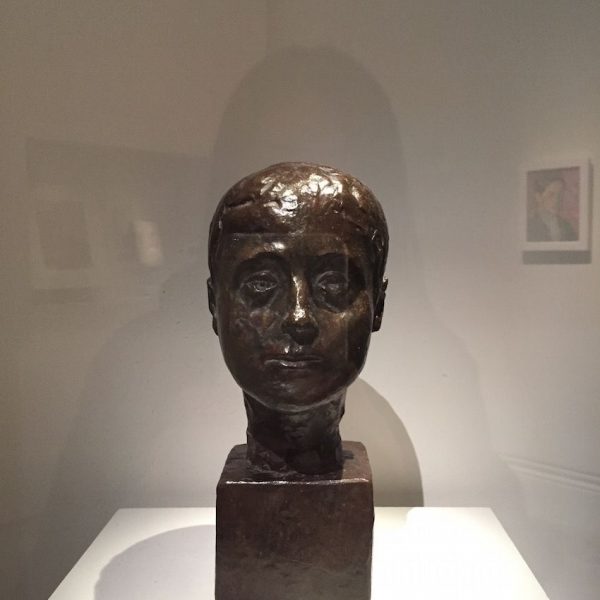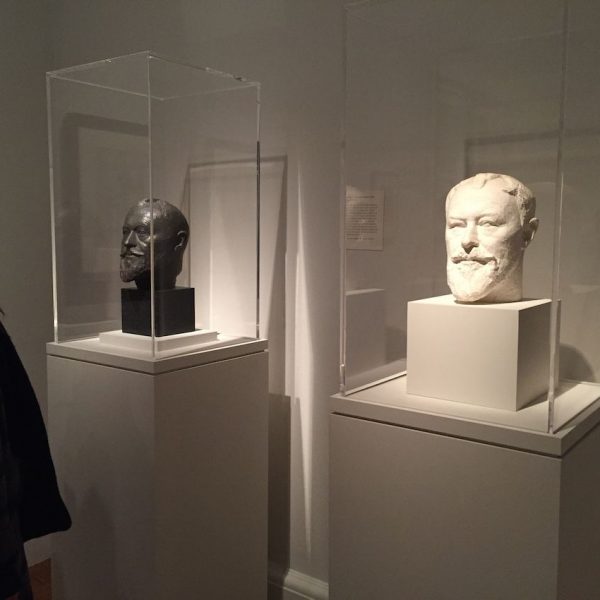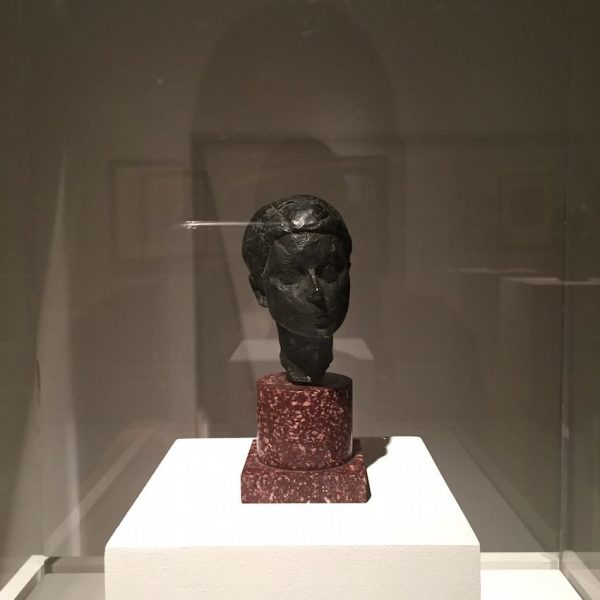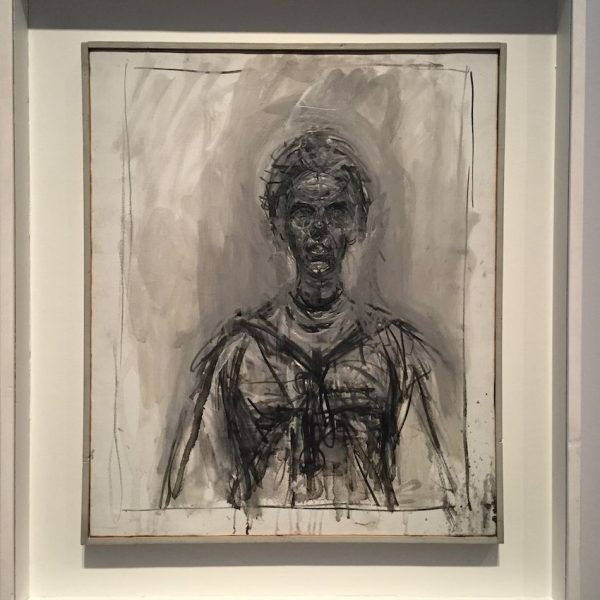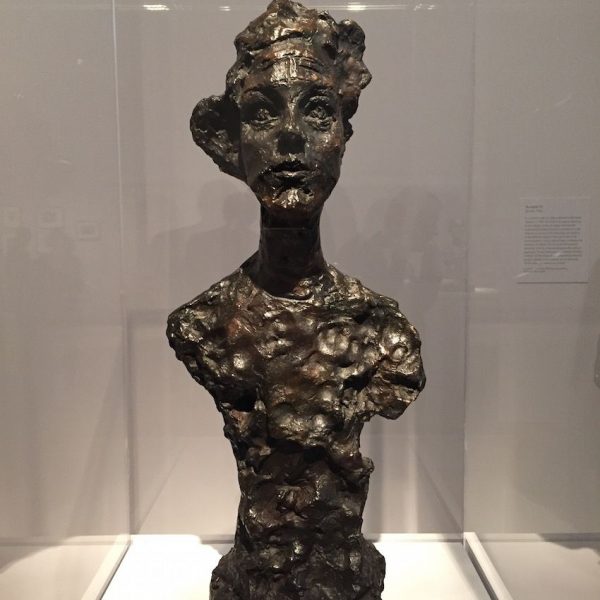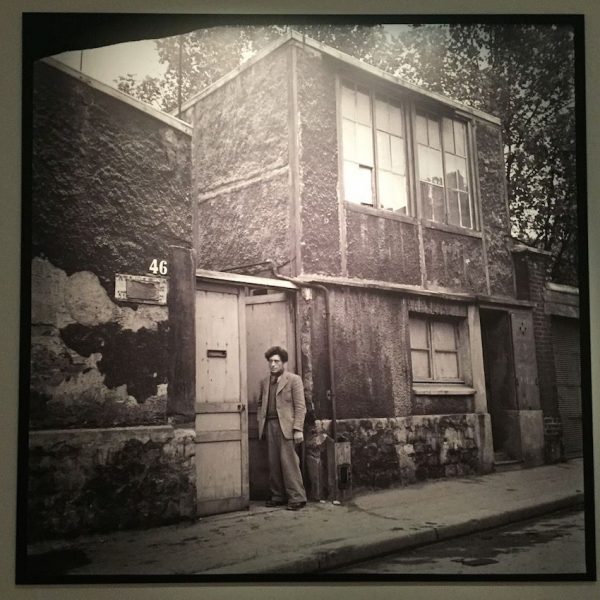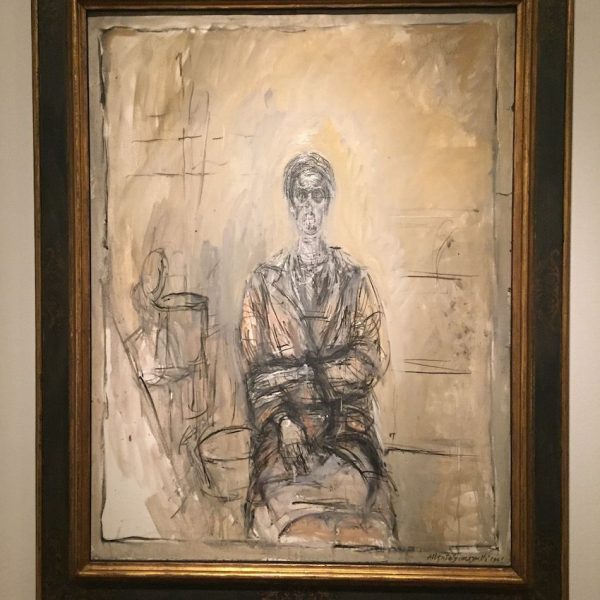
The first ever exhibition solely to consist of portraits by the twentieth-century artist Alberto Giacometti opens at the National Portrait Gallery on Thursday 15 October.
Giacometti: Pure Presence (15 October 2015-10 January 2016) comprises over 60 works, including paintings, sculptures and drawings, spanning the entire range of the Swiss artist’s career. Including very rare loans from private collections and seldom-seen portraits, the exhibition marks the fiftieth anniversary of Giacometti’s death.
Best known for his sculptures of elongated figures, Alberto Giacometti (1901-66) is widely known as a leading twentieth century sculptor working alongside Picasso, Miró and Ernst in Paris in the 1920s.
But the Gallery’s exhibition emphasises the portraits also produced by the sculptor during this time at his family home in Switzerland where he steered a lesser-known, parallel artistic course. Beyond that, and covering the period 1914 to 1966, the exhibition reveals Giacometti’s life-long preoccupation with portraiture and ’copying appearance.’
Giacometti: Pure Presence focuses on the intensity of his relationships with frequent sitters such as members of his close family; Isabel Nichol (who later became Francis Bacon’s muse Isabel Rawsthorne); and the young woman Caroline, whom he met in 1960 and who sat for his portraits over the following five years.
Tracing Giacometti’s engagement with representing a human presence, Giacometti: Pure Presence displays portraits of all his main models, including his wife Annette and his brother Diego, as well as such friends as the writers Louis Aragon and Jean Genet, and the philanthropist Lord Sainsbury. The exhibition also features a room of photographs documenting the artist’s life.
Highlights include his earliest portrait bust of his brother Diego created in 1914 when he was just thirteen years old and his last bronze busts from 1965. These are displayed alongside an astonishing range of paintings and drawings which show Giacometti’s development from post-impressionist influences via cubism to expressionist portraits of figures in highly charged spaces, reminiscent of the ‘caged’ compositions of Francis Bacon.
Major sculptures on show range from a serene head of Isabel inspired by Egyptian sculpture to portraits of Diego and Annette: gnawed, dissolving heads and figures that became Giacometti’s trademarks. Such sculptures are frequently pared down to very small forms evoking the experience of observing the sitter from a distance.
One of the artist’s most celebrated tall hieratic figures Woman of Venice VIII, stands at the centre of the exhibition, making a vital contact between Giacometti’s portraits and his famous sculptures evoking an archetypal human presence.
Giacometti: Pure Presence is the first major Giacometti exhibition to be held in the United Kingdom since those at the Tate in 1965 and at the Royal Academy and Scottish National Gallery of Modern Art in 1996, and is the first to focus exclusively on Giacometti’s engagement with the human figure and the creation of images of an individual human presence based on particular models. The title of the exhibition derives from the existentialist writer Jean-Paul Sartre, who referred to Giacometti’s endeavour to give ‘sensible expression’ to ‘pure presence.’
The loans are drawn from museums and private collections worldwide including Louisiana Museum of Modern Art, Denmark; Tate; Collection Fondation Giacometti, Paris; Alberto Giacometti Foundation, Zurich; Kunsthaus Zürich; Fondation Beyeler, Riehen/Basel; Sainsbury Centre for Visual Arts, University of East Anglia; Kunstmuseum Winterthur; Staatsgalerie Stuttgart; V-A-C Foundation, Moscow; and the Museum of Modern Art, New York.
Paul Moorhouse, Curator of Giacometti: Pure Presence, says: ‘Giacometti is widely celebrated as one of the giants of modern art, but his almost continuous involvement with portraiture is less well known. In devoting individual rooms to his main models, the exhibition exposes the singular, obsessive and intense nature of Giacometti’s portraits. Repetition, variation, accretion and dissolution are revealed as vital elements in his extraordinary vision.’
Dr Nicholas Cullinan, Director, National Portrait Gallery, London, says: ‘It is fitting that the National Portrait Gallery is staging this major exhibition of portraits by one of the greatest twentieth century artists, in the fiftieth anniversary year of his death. Including paintings, drawings and sculpture, the exhibition casts a new light on Giacometti’s startlingly original representation of the human figure.’
Andrea Sullivan, Head of Corporate Social Responsibility, EMEA, Bank of America Merrill Lynch, says: ‘Maintaining a vibrant arts sector is crucial to ensuring strong communities and economies. Our global and diverse programme of cultural support has been developed with this in mind. We have a long-standing relationship with the National Portrait Gallery having partnered on recent exhibitions including Irving Penn Portraits and Lucian Freud Portraits and are pleased to be supporting this beautiful retrospective of Giacometti’s work.’
15.10.2015 – 10.1.2016
倫敦國家肖像畫廊
在阿爾伯托·賈科梅蒂(Alberto Giacometti)逝世五十週年之際,倫敦國家肖像畫廊為這位上世紀的藝術巨匠舉辦了一次肖像作品展。存在主義作家讓·保羅·薩特(Jean-Paul Sartre)談及賈科梅蒂竭力給予“純粹在場”一個 “合理的表達”,這也正是展覽標題的出處。
展覽展示了包括油畫、雕塑和素描在內的60餘件作品,展现了這位瑞士藝術家的整個藝術生涯。他的經典創作當屬“紙片”人物雕塑,但本次展覽中賈科梅蒂與他的模特們才是重心,如他親密的家庭成員;伊莎貝爾(Isabel Nichol),後來成為了弗朗西斯·培根(Francis Bacon)的繆斯;還有他在晚年結識的年輕女子卡羅琳(Caroline),在隨後的五年裡一直作為他主要的創作對象。
《賈科梅蒂:純粹在場》回溯了賈科梅蒂對存在主義的詮釋,全面展示了他主要模特的肖像,包括他的妻子安妮特(Annette)和他的兄弟迭戈(Diego),以及他的朋友們。展覽亮點包括最早期於1914年他為迭戈創作的半身肖像畫,當時他年僅十三歲;還有1965年晚期的一些青銅半身像作品。除此之外,他的油畫和素描系列貫穿了賈科梅蒂在後印象派影響下的發展歷程,經由立體主義到表現主義,不禁令人聯想起弗朗西斯·培根的“籠內”作品。
當然,以雕塑著稱的他,雕塑作品也是展覽中不可或缺的存在。有安詳的伊莎貝爾頭像,靈感來自埃及雕塑,也有家人安妮特和迭戈的雕塑:這些齒蝕狀的,消融的頭顱和人像已然成為賈科梅蒂的獨特標誌。許多雕塑的尺寸並不大,應該是遠距離觀察模特的緣故。其中佇立在展覽中央的是他創作中最久負盛名的人物之一——神聖高大的《威尼斯八世的女人(Woman of Venice VIII)》,在肖像畫和雕塑之間建立了很緊密的聯繫,也是他表達人物存在的典型案例。
Edited & Translated by Qiwen Ke
編輯 x 翻譯:柯淇雯




